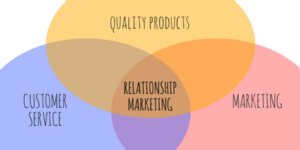Your product is valuable. You know it. You hope your customers know it. But how can you be sure? How can you ensure that your product benefits your customers and, in so doing, benefits your company?
This article focuses on how you can create and deliver value to your customers, which requires the presence of a “net (customer) benefit” and an understanding of service gaps.
Establishing a net benefit
What is a net benefit? It’s the sum of how much customers want you to install decorative concrete for them (i.e. gross benefit) minus the price you charge: Gross Benefit – Price = Net Benefit.
In this equation, “price” includes money, time, business or lifestyle interruption, energy, opportunity costs and everything else a customer must sacrifice when hiring a professional decorative installer. The key to establishing this much-needed net benefit is to ensure customers want your service more than its price.
“Interesting,” you say. “But how exactly do I establish a net benefit in my business?” One word: marketing. A net benefit will exist only when customers perceive your product to be more valuable than your price. And customer perception is created and managed through the use of (strategic) marketing. Thus, one of the first responsibilities of entrepreneurship is to use marketing to create and manage customer perceptions about your business and product.
Your marketing message, whether it’s delivered through print ads, online ads, fliers or even business cards, must explicitly communicate what differentiates your business from your competition. This differentiator, which can often be your most compelling competitive advantage, can be identified by soliciting feedback from your existing customer base about why exactly they hired you instead of your competition.
One of my Certified NewLook Installers seeks to extract as much feedback from previous customers as possible. In doing so, he learned that a major factor in customers’ decisions to hire him was that he smiled more than his “ornery” competition. Seriously. So he reinforced his congenial reputation in all of his direct mailing advertisements by using a professional-looking picture of himself grinning from ear to ear and the slogan, “Your FRIENDLY Professional Decorative Installer.” Since he began this initiative he has seen a very positive response to his marketing efforts and an increase in new customers.
If you are able to establish a compelling value proposition in the minds of prospective customers (e.g., a large gross benefit) then you will have more room to raise your price. But if customers see you as just another decorative contractor, you will be subject to discount pressure. In fact, when price becomes the critical factor in your customers’ decision to hire you, your sales pitch did not effectively communicate your true value proposition. This is a red flag — a signal for you to remind your customer about what you do better than anyone else.
Closing service gaps
The easiest thing to implement in your business is providing customer service. But customers have certain expectations about how your service should be delivered. When you fail to meet those expectations, “service gaps” result. Therefore, you should examine all aspects of your service delivery process and develop a service strategy that appropriately fits your target market.
The “knowledge gap” is the difference between your customers’ expectations and how you perceive those customer expectations. For example, your customers may assume you will move their furniture before staining their basement floor and then replace it when finished. If you are not aware of this expectation, you won’t be able to factor that labor into your bid.
To reduce knowledge gaps, you must understand your customers’ expectations by conducting customer research and increasing your interaction with customers. Be honest and upfront. Ask questions. Get them talking. And for heaven’s sake, listen!
It is often difficult for customers to evaluate your service quality — how well you meet or exceed expectations. However, according to experts Dhruv Grewal and Michael Levy in their book, “M: Marketing,” customers will use five service dimensions, or service building blocks, to determine how well you deliver.
First, your ability to execute the project contract dependably and accurately reflects your reliability. This means you should do quality work or don’t do it at all.
Second, customers evaluate your responsiveness by how willing you are to help them and provide prompt service. One of the fastest ways to destroy your credibility is to do shoddy work and then disappear if your customer calls to complain.
Third, customers look for assurance, which is your level of product knowledge and courtesy and your ability to convey trust and confidence. Remember, customers want to hire consultative experts, not smarmy salesmen.
Fourth, the caring, individualized attention you provide will help customers determine your empathy for them.
Finally, customers look for the tangibles of your business — the appearance of physical facilities, equipment and personnel.
The “delivery gap” is where the rubber meets the road. It pertains to the difference between your service standards and the actual service you provide to customers. Ongoing training and a culturally inbred commitment to quality are ways to set service standards for your installation business.
Most product suppliers and manufacturers offer hands-on training so you and your team can develop the competence you need to successfully achieve those standards. I challenge you to actively participate in those trainings even if you’ve been there, done that. No matter how many times you’ve attended the same supplier’s product demonstration, there is always something new to learn.
Also, you should remember that employees take their cues from management. If you strive for excellent customer service, treat your customers well and demand the same attitude from everyone on your team, it is likely your employees will do the same.
Delivery gaps can be reduced when your employees are: 1) empowered to act in the customers’ and your company’s best interests, and 2) supported in their efforts so they can do their jobs effectively.
I once heard of an entry-level decorative installer who was left to finish a project while his supervisor visited another job site. During that time, the property owner approached the newbie installer and requested that he seal a small section of concrete that was not agreed upon in the original contract. The installer had an extra unit of sealer and happily complied without even hesitating. Rather than reprimand this worker for using unopened product material, the supervisor later praised the artisan for adhering to the company’s standard of service quality.
You must identify and market your competitive advantage to establish a net benefit for your customers. This will give you room to raise prices, increase revenue and grow your business. Make legendary customer service your core. Identify and close the service gaps that inhibit your ability to create and deliver lasting customer value.
Tips for Changing How Clients See You
• Solicit from your customers their perception of what differentiates you from your competition, and emphasize this in your marketing messages.
• Evaluate the net benefit you offer by examining your price stability. If customers are pressuring you to discount your price, then chances are your net benefit is low and should be reinforced through the use of marketing. If you’re booked solid for three months out, however, then you likely have a strong net benefit and possibly room to raise prices.
• Interact with customers more frequently to understand and better manage their expectations of you and your service. This will help prevent confusion and resentment that can lead to awkward legal ramifications.
• Evaluate how well you meet or exceed customer expectations using the five service building blocks — reliability, responsiveness, assurance, empathy and tangibles.
• Empower your employees and installation team with the autonomy to act in your customers’ best interest. Teach them to use their best judgment when satisfying customers.















